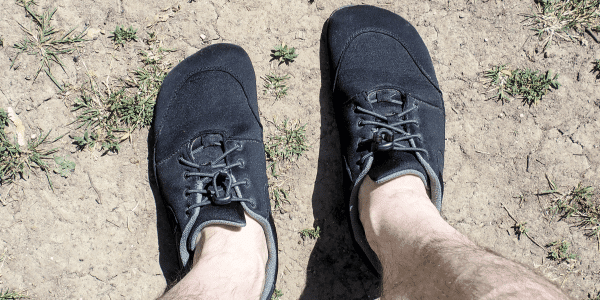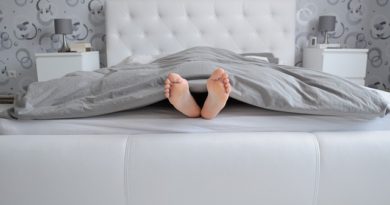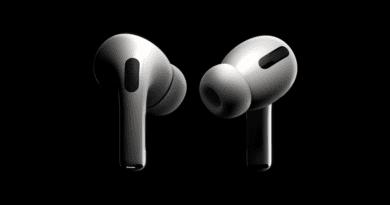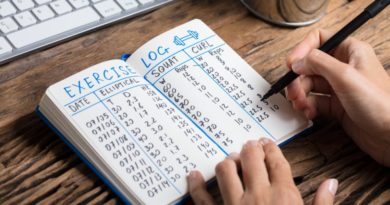Foot Fitness: How Barefoot Shoes Enhance Strength and Flexibility
Do you feel like your feet lack strength and flexibility? Have you ever considered foot fitness in your routine? Studies link this issue to not walking enough, specifically in minimalist or barefoot shoes. You know what I’m talking about, the ones many of you have made fun of for having spots for your toes to slide into individually or the shoes that have a zero-drop and look like they have no sole to them.
Well, those funny-looking barefoot shoes have a purpose, and as more people slide their feet in them, the more they understand the benefits and what they’ve been missing all this time.
In this article, we are going to dive deeper and take you on a journey to foot fitness by exploring the benefits of barefoot shoes that enhance strength and improve flexibility.
Keep reading… it’s time to give your feet the love they deserve!
Disclaimer: This article is for informational purposes only and is not meant to treat or diagnose any condition. It is recommended that you speak with your doctor before starting any exercise program, changing your daily nutrition, or adding any supplements to your regimen.
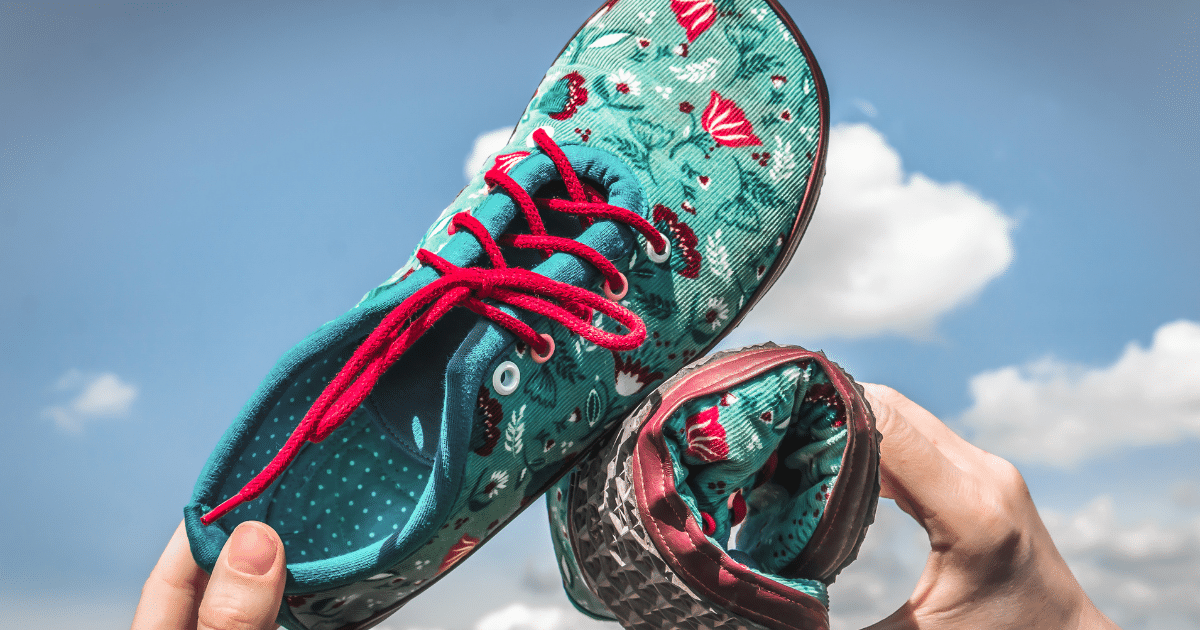
Table of contents
Key Takeaways
- Barefoot shoes can significantly increase foot strength by up to 60% due to their flexible and minimal structure.
- Wearing barefoot shoes improves foot flexibility, allowing muscles, tendons, and ligaments to move naturally and adapt to various terrains.
- Barefoot shoes enhance balance and stability by promoting natural movements of the feet and improving awareness and control over foot muscles.
Benefits of Barefoot Shoes for Foot Fitness
Barefoot shoes for foot fitness increase foot strength and improve flexibility, enhancing balance and stability.
1. Increased foot strength
Wearing barefoot shoes can significantly boost your foot strength. Scientists have found that these minimalist pieces of footwear can spike foot muscle strength by up to 60%. Imagine flexing sturdy, well-toned muscles right in the soles of your feet! This impressive increase is due to the flexibility and minimal structure of these shoes, which facilitate the growth and empowerment of intrinsic foot muscles.
Related Article: Xero Shoes — Where Fashion Meets Function in Minimalist Footwear
Not only do professional athletes benefit from this, but everyday fitness enthusiasts also gain from stronger feet. To top it off, both barefoot shoe wearers and those sporting moderate minimalist shoes show notable improvements in muscle size compared to traditional shoe users.
So, ditch those hefty sneakers — adopting barefoot shoes could be a game-changer for developing robust foot health.
2. Improved flexibility
Barefoot shoes have a key role to play in boosting our foot flexibility. Muscles, tendons, and ligaments get to move naturally because of the unique design of these footwear options.

Unlike traditional shoes that restrain foot motion, barefoot shoes promote unrestricted movement. You’ll notice your feet adapting with ease to various terrains as the range of motion expands.
Related Article: Step Into Comfort — The Benefits of Wide Toe Box Shoes
Wearing lightweight and flexible barefoot shoes increases mobility significantly. It’s not just about comfort; it’s crucial for overall foot health too. Sports enthusiasts can take advantage of this particular benefit during athletic activities.
Research reveals that flexible and minimal footwear has a positive impact on foot strength while playing sports.
3. Enhanced balance and stability
Barefoot shoes excel not just in improving foot strength and flexibility but also play a vital role in enhanced balance and stability. Due to their design, they allow for more natural movements of your feet.
This promotes better awareness and control over the muscles of your feet which strengthens your ankles.
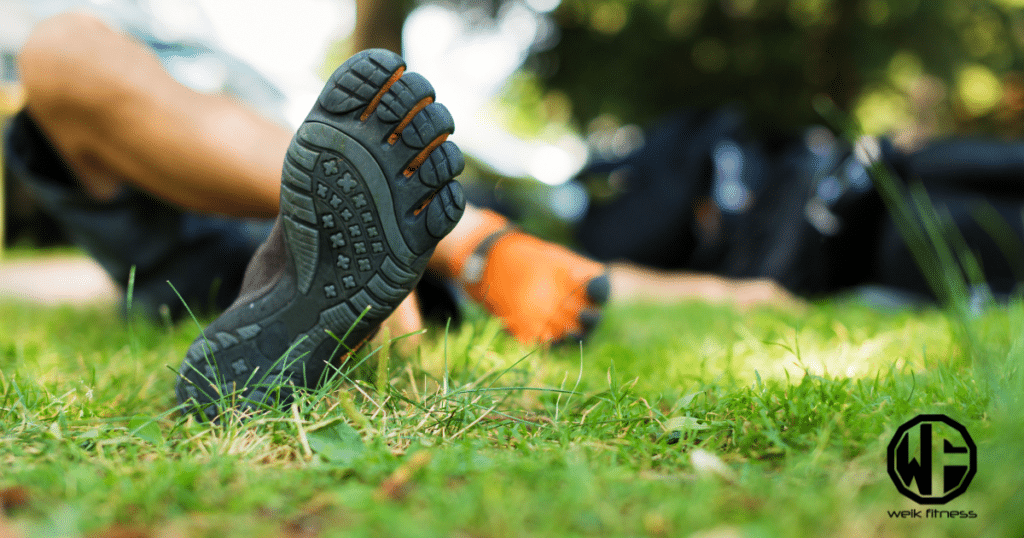
This heightened control leads to an improvement in overall stability, even when you’re performing complex movements or activities that challenge your balance. Each step you take with barefoot shoes sends valuable information from the soles of your feet directly to your brain about the ground beneath you, thus refining both proprioception and kinesthetic awareness — key components for maintaining good balance.
Notably, using barefoot shoes can potentially reduce knee and hip injuries by establishing superior body equilibrium.
Foot Exercises for Transitioning to Barefoot Shoes
– Short Foot exercise engages the muscles of the foot by actively contracting and lifting the arch, helping to establish proper alignment and strength.
– Toe spacers promote toe mobility and help realign toes that may have been cramped or compressed in traditional footwear.
– Toe-ga exercises involve moving each toe individually, stretching, and strengthening them for improved balance and stability.
– Rolling out the foot with a massage ball or foam roller aids in releasing tension, increasing blood flow, and reducing stiffness in the feet.
– Balancing exercises such as standing on one leg or practicing yoga poses barefoot can enhance stability while also engaging the muscles of the feet.
Short Foot Exercise
The Short Foot exercise is a great way to strengthen the muscles in your feet. To do this exercise, simply press your toes into the ground, contracting the arch of your foot. This is an isometric exercise that can help improve foot strength and stability.
Toe Spacers
Toe spacers are useful for improving foot fitness and maximizing the benefits of barefoot shoes. They aid in achieving proper toe alignment, which enhances balance, stability, and overall foot health. Here are some key points to know about toe spacers:
- Proper toe alignment
Toe spacers help align the toes correctly, eliminating issues like overpronation and promoting better balance. They ensure that each toe is in its natural position, improving overall foot function.
- Improved balance and stability
By distributing body weight more evenly on the foot’s surface, toe spacers enhance balance and stability. This can be particularly beneficial for activities that require good footing, such as running or weightlifting.
- Wide toe splay
Toe spacers encourage a wider toe splay, where the toes spread out naturally. This wider positioning creates a larger base of support for the foot, enhancing stability during movement.
- Popular among athletes
Athletes and lifters are increasingly recognizing the potential benefits of using toe spacers in their training routines. The improved foot alignment and stability they provide can help prevent injuries and optimize performance.
- Shortcut to foot fitness
Along with specific exercises and barefoot walking, toe spacers are considered a shortcut to achieving foot fitness. Incorporating them into your routine can expedite the process of strengthening your feet and improving flexibility.
Toe-Ga Exercises
Toe-ga exercises significantly improve mobility, flexibility, and strength in your ankles, feet, and toes. Incorporating these exercises into your daily routine can help enhance the strength and flexibility of your feet, making them better prepared for transitioning to barefoot shoes. Here are some toe-ga exercises you can try:
- Toe scrunches
Start by sitting comfortably with your feet flat on the floor. Slowly scrunch up your toes as tight as you can, then release them back to the starting position. Repeat this exercise about 10-15 times.
- Toe spreads
Sit or stand with your feet flat on the ground. Gradually spread your toes apart as wide as possible and hold for a few seconds before relaxing. Repeat this exercise for about 10-15 times.
- Toe curls
While seated or standing, place a towel or small cloth under your foot. Use your toes to grab onto the towel and curl it towards you, then release it back to its original position. Repeat this exercise for about 10-15 times.
- Toe lifts
Stand tall with both feet flat on the ground. Slowly lift all of your toes off the floor while keeping your heels grounded. Hold this position for a few seconds before lowering them back down. Repeat this exercise for about 10-15 times.
Rolling out the Foot
Rolling out the foot can help improve foot mobility and alleviate tension in the muscles and fascia. It is a simple technique that involves using a tennis ball or foam roller to massage the bottom of your foot. This can help release tightness in the arches and stimulate blood flow, promoting overall foot health. Give it a try by rolling the ball or roller back and forth under your foot, paying extra attention to any areas that feel particularly tense or sore.
Balancing Exercises with Barefoot Shoes
Balancing exercises are an essential part of foot fitness. These exercises help improve stability and proprioception, which is your body’s awareness of its position in space. Include these balancing exercises in your foot fitness routine:
- Single-leg balance
Stand on one leg and hold the position for 30 seconds. Repeat on the other leg.
- Toe raises
Stand with both feet flat on the ground, then raise up onto your toes and hold for a few seconds before lowering back down.
- Heel-to-toe walk
Take small steps, placing the heel of one foot directly in front of the toes of the other foot with each step.
- Yoga tree pose
Stand tall, lift one foot off the ground, and place it against the opposite calf or thigh. Hold this position for 30 seconds, then switch sides.
Common Mistakes to Avoid when Transitioning to Barefoot Shoes
Transitioning too quickly can lead to injuries and setbacks in foot fitness progress.
Transitioning too quickly
Transitioning too quickly to barefoot shoes can lead to a higher risk of injuries. Studies have shown that runners who abruptly switch to minimalist footwear often experience an increase in foot and ankle problems.
It is crucial to take the time for gradual progression and allow your feet to adapt to the new shoes. Ignoring this important step can put unnecessary stress on your muscles and tendons, leading to discomfort or even pain.
By giving yourself ample time for adjustment, you can reduce the likelihood of injury and enjoy the benefits of barefoot shoes without putting your foot health at risk.
Not allowing time for adaptation
Rushing the transition to barefoot shoes is a common mistake that can hinder your foot fitness progress. It’s important to remember that it takes time for your muscles, ligaments, nerves, and skin to adapt to the new stresses of minimalist footwear.
Abruptly switching without allowing enough time for adaptation can increase the risk of foot and ankle-related issues. According to a systematic review, gradual adaptation is crucial in preventing injuries when transitioning to minimal footwear.
Related Article: Why Recovery Shoes Are a Must for Athletes
So be patient and give yourself ample time for your body to adjust properly.
Neglecting proper form and technique
Neglecting proper form and technique when transitioning to barefoot shoes can have detrimental effects on your foot fitness. This is a mistake that should be avoided at all costs. Proper form and technique are crucial for ensuring the safety and effectiveness of your transition to barefoot shoes.
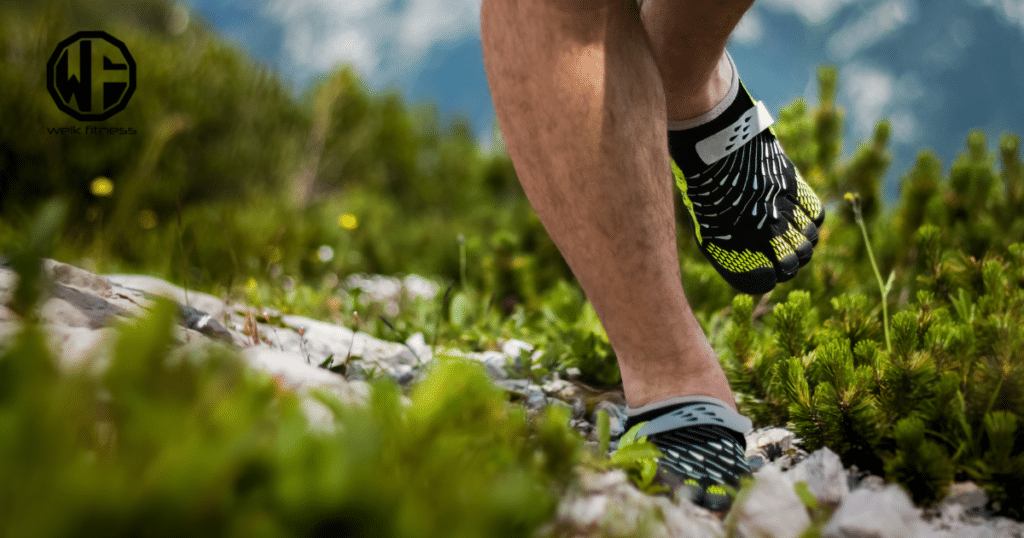
It is crucial to prioritize correct posture, alignment, and movement patterns during exercises and activities while wearing these shoes. Neglecting proper form and technique increases the risk of injury and hinders your progress in developing foot strength and flexibility.
So remember, pay attention to your form and technique every step of the way!
Overdoing the exercises
Overdoing the exercises associated with transitioning to barefoot shoes can be tempting, but it’s essential to avoid this mistake. Pushing yourself too hard too soon can lead to potential injuries and setbacks in your foot fitness journey.
Remember, listening to your body and giving yourself enough time for adaptation is crucial. By gradually increasing the intensity of your workouts and allowing for proper rest periods, you’ll minimize the risk of overuse injuries and ensure a smooth transition to barefoot shoes.
Ignoring discomfort or pain is another common mistake when it comes to overdoing exercises while transitioning to barefoot shoes. It’s vital that you pay attention to any signs of discomfort or pain during your workouts.
Related Article: Merrell Hydro Moc — Footwear Fusion Where Style Meets Function
If something doesn’t feel right, don’t push through it. Take a break and reassess your approach before continuing. Your body needs time to adjust and build strength in order to fully benefit from barefoot shoe training.
Ignoring discomfort or pain
Ignoring discomfort or pain when transitioning to barefoot shoes can negatively affect your foot health. It’s essential to listen to your body and address any discomfort or pain that arises during this process.
Ignoring these warning signs may put you at risk of developing foot issues such as plantar fasciitis, Achilles tendonitis, or even ingrown toenails. Instead of pushing through the discomfort, take the time to assess what might be causing it and make any necessary adjustments to your transition plan.
RELATED: 7 Shin Splint Stretches to Help Prevent Shin Pain
Remember, a safe and successful transition requires patience and proper attention to your body’s needs.
What Are Some of the Best Barefoot Shoes on the Market?
Below is just a short list and their models vary to suit your wants, needs, and personal style.
Get Yourself Some Barefoot Shoes Today!
Barefoot shoes are a game-changer for foot fitness. They strengthen your feet, increase flexibility, and improve balance and stability. Don’t forget to start with proper exercises and avoid common mistakes for a successful transition to barefoot shoes.
Related Article: Calf Building 101 — A Guide on Building Massive Calves
Get ready to step into a world of enhanced strength and flexibility with the power of barefoot shoes!
Barefoot Shoes FAQs
Barefoot shoes allow your feet to move naturally, which helps strengthen the muscles in your feet and increase their flexibility.
Barefoot shoes are ideal for activities that involve natural movement, such as walking, running, or light exercise. However, they may not provide enough support for high-impact sports or activities with heavy lifting.
Yes, wearing barefoot shoes can improve posture by promoting a more natural alignment of the feet, which can positively affect the entire body’s alignment and posture.
When transitioning to barefoot shoes, it is important to start slowly and gradually increase the amount of time you spend wearing them. This allows your feet to adjust and avoid potential discomfort or injury.


*Disclosure: This article may contain affiliate links or ads, which means we earn a small commission at no extra cost to you if you make a purchase through these links. These commissions help support the operation and maintenance of our website, allowing us to continue producing free valuable content. Your support is genuinely appreciated, whether you choose to use our links or not. Thank you for being a part of our community and enjoying our content.
PLEASE CONSIDER SHARING THIS ON YOUR SOCIAL MEDIA TO HELP OTHERS LEARN MORE ABOUT THIS TOPIC.


